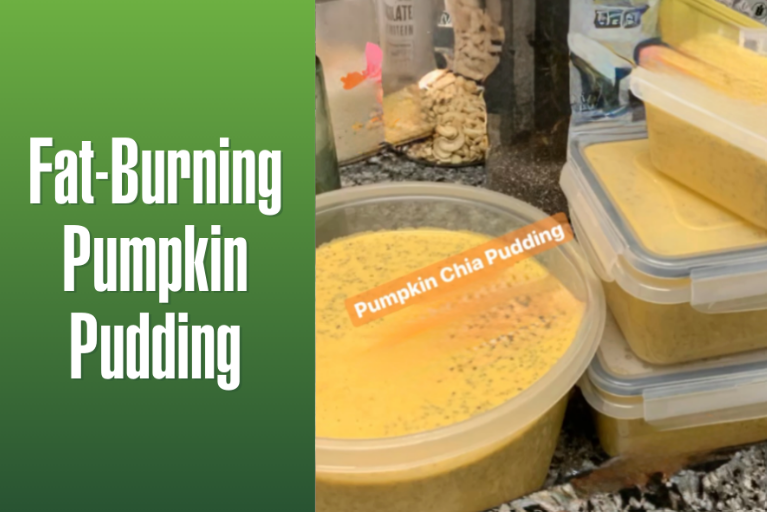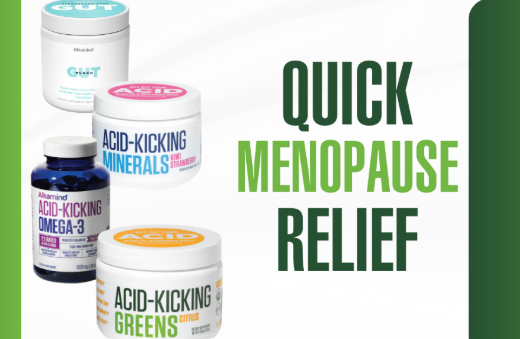
If you spend time searching online for health and diet tips, you’ve probably come across the anti-inflammatory diet. Based on the simple idea that the foods you eat can decrease inflammation in the body — and consequently reduce your risk of certain diseases — this style of eating has, not surprisingly, become one of the most talked-about diets lately.
What is the anti-inflammatory diet?

The anti-inflammatory diet isn’t one specific diet. It’s really a scientifically based way of eating that optimizes your health by bringing more nourishment to the body. The basic premise behind the anti-inflammatory style of eating is simple: When you add nutrients such as fiber, vitamins, minerals, essential fatty acids, and phytonutrients — plant-based compounds — you decrease inflammation.
Why is decreasing inflammation important? Taz Bhatia, MD, an integrative health expert and author of Super Woman RX ($15.65, Amazon), explains that inflammation is an immune response that happens when your body perceives a threat — a threat you want to prevent in the first place. So, what are some of the things we eat that trigger a threat? Dr. Bhatia says they include highly processed foods, refined sugars and carbohydrates, and fatty red meats. Alcohol can be a culprit, too. And many people now find that gluten and dairy foods can set off inflammation because they disrupt or damage digestion. Unfortunately, many of the foods we are accustomed to eating are “processed and very inflammatory,” says Sue Decotiis, MD, a triple-board-certified weight loss specialist. That’s where the anti-inflammatory diet comes in.
What can you eat on the anti-inflammatory diet?
The beauty of the anti-inflammatory diet is that recommended foods are typically simple to buy and prepare. “Anti-inflammatory eating is actually pretty easy to do if you follow a Mediterranean-style diet,” says Lisa Davis, Ph.D., PA-C, CNS, a chief nutrition officer at Terra’s Kitchen, a service that delivers ingredients and recipes for healthy meals. A Mediterranean-style diet is mostly plant-based, emphasizing fruits, vegetables, nuts, whole grains, fish, and healthy oils like olive oil.
The anti-inflammatory diet includes foods high in omega-3 fatty acids, antioxidants, fiber, and spices. It also promotes a balance of omega-3 and omega-6 fatty acids. “Most people consume an excess of omega-6 fatty acids, from which the body synthesizes hormones that promote inflammation,” says Rebecca Kerkenbush, a registered dietitian. These omega-6 polyunsaturated fats are found in vegetable oils, seeds, and nuts, and are used in many snack foods and fast foods. On the other hand, omega-3 fatty acids have an anti-inflammatory effect. They are found in foods including oily fish, walnuts, flax and chia seeds, and to a lesser degree, in soy and canola oils and sea vegetables.
Andrew Weil, MD, a Harvard-educated leader in the field of integrative medicine, is a big proponent of an anti-inflammatory diet, which he also says is similar to the Mediterranean diet. Dr. Weil’s anti-inflammatory food pyramid is based on four simple ideas: aim for variety; include as much fresh food as possible; minimize your consumption of processed and fast foods; and eat an abundance of fruit and vegetables.
Based on a 2,000-calorie-a-day diet, women should expect to consume 160 to 200 grams of carbohydrates, between 80 and 120 grams of protein, 40 grams of fiber, and around 67 grams of fat, with a ratio of 1:2:1 of saturated to monounsaturated to polyunsaturated.
Anti-inflammation foods include:
- Fresh fruits (strawberries, blueberries, oranges, and cherries)
- Vegetables (non-nightshade) tomatoes
- Nuts (almonds, walnuts, and others)
- Olive oil
- Leafy greens (spinach, kale, collards, etc.)
- Fatty fish rich in omega-3s (wild salmon, mackerel, tuna, and sardines)
- Beans and legumes
- Organic/pastured meats in moderation and smaller portions
- Whole grains (bulgur, barley, farro, and brown, black or red rice) and products made with whole grain flour
Foods that cause inflammation and should be avoided include processed meats, fried foods, soda, lard, full-fat dairy products, partially hydrogenated oils, foods with a long shelf life (cakes, cookies, crackers, etc.), foods high in simple carbohydrates and refined grains, and any foods that trigger intolerance reactions.
Anti-Inflammatory Meal Plan
Inflammation has been associated with diseases like cardiovascular disease, cancer, Alzheimer’s, and arthritis. And the foods recommended in the anti-inflammatory diet have been shown to combat and even reverse inflammatory damage. The good news, says Stephanie Ferrari, RDN MS, a registered dietitian nutritionist, is that you can eat your way to better health. Below is a sample meal plan she put together to help you get into anti-inflammatory eating:
Breakfast
Beverage: Green tea and water
Food: Steel-cut oats (made with water or low-fat milk) topped with blueberries, chia seeds, and cinnamon
Snack
Beverage: Water
Food: One medium orange with a quarter-cup of walnuts
Lunch
Beverage: Sparkling water with a lime or lemon wedge
Food: Spinach salad topped with grilled salmon, roasted beets, and olive oil and vinegar
Snack
Beverage: Water
Food: 15 to 30 RECOVERYbits Chlorella algae tablets and a handful of dark chocolate chips combined as a snack mix
Dinner
Beverage: Water and a glass of red wine
Food: Stir-fried chicken, red peppers, onions, and broccoli in a peanut stir fry sauce with garlic and ginger
Dessert
Black bean brownies

Here is another sample anti-inflammatory meal plan put together by Davis:
Breakfast
Cup of coffee, which is rich in polyphenol antioxidants, and Greek yogurt with little or no added sugar, with berries and/or tart cherries and topped with flaxseeds, which are rich in omega-3s
Lunch
Leafy green salad with nuts, berries, a handful of tomatoes (rich in anti-inflammatory lycopene), a few sliced hot peppers (an excellent source of capsaicin, known to have anti-inflammatory properties), or a few sliced beets (which contain betalains, which also reduce inflammation)
Snack
Green tea, a powerful source of catechins with a big antioxidant punch, with a handful of walnuts or almonds (good source of omega-3s and vitamin E), or edamame (soy contains anti-inflammatory isoflavones, which are good for the heart and bones)
Dinner
Orange-glazed salmon with minted vegetables, packed with anti-inflammatory omega-3s from the fish
Dessert
A square of at least 72 percent dark chocolate teamed with your favorite berries and a glass of red wine that is high in the antioxidant resveratrol, like a pinot noir.
Anti-Inflammatory Diet Recipes
If you’ve spent a large part of your life on a diet, then you know how awful some programs’ recipes can be. That’s not the case with the anti-inflammatory diet. Since eating an anti-inflammatory diet is about making a lifestyle change, you will find a lot of variety and flexibility in the foods you can prepare. Here are a few of our favorite anti-inflammatory recipes that we think you will love too.
Daryl Gioffre, DC, a board-certified chiropractor who lives the anti-inflammatory lifestyle, shares these delicious and easy-to-make anti-inflammatory recipes with First for Women readers:
Dr. Green Detox Smoothie: A straight-up green smoothie packed with lots of veggies.
Zucchini Sushi: Sushi lovers can make this easy finger food for kids, but it’s elegant enough to serve when entertaining. The filling can also be used as a veggie dip.
Quinoa Burrito Bowl: This tasty entree is simple to prepare. Gioffre likes to use adzuki beans because they are smaller and easier to digest than other beans.
Vanilla Coconut Chia Pudding: This dessert takes only 10 minutes to make in the blender, but has to be refrigerated for at least five hours.
Chef Libbie Summers, creative culinary director of Terra’s Kitchen, created (along with Davis) these two recipes packed with anti-inflammatory ingredients:
Orange-Glazed Salmon with Minted Spring Vegetables: Full of anti-inflammatory omega-3s from the salmon, a serving clocks in at under 400 calories.
Indian Beef and Potato Stew: This stew contains rich turmeric and tomato bone broth, which is high in anti-inflammatory amino acids glycine and proline. Cilantro is also an anti-inflammatory powerhouse and has impressive gut-health benefits, as well.
And this tea from Bhatia packs an anti-inflammatory punch:
Dr. Taz’s Turmeric Pepper Honey Tea: Boil some water, add a black or green tea bag, 2 teaspoons of ground turmeric, ½ teaspoon of ground black pepper, and 1 teaspoon of honey. Put it all in a mug, steep for five minutes, and stir. Black and green tea are both known to help the body fight viruses; turmeric is an anti-inflammatory and helps balance hormones; black pepper, also an anti-inflammatory, and boosts turmeric’s absorption by the body; and honey is one of nature’s immunity-building agents.
Are there vegan options on the anti-inflammatory diet?
You’re ahead of the game if you already eat a diet free of meat and animal products. “An anti-inflammatory diet is easy for vegans, because the easiest way to decrease inflammation is to eat a plant-based diet and cut out meat and animal products,” explains Davis.

Can the anti-inflammatory diet be good for arthritis?
The short answer is yes, says Bhatia. When you consider that the root of arthritis is inflammation, it makes sense that following an anti-inflammatory diet plan can help relieve debilitating symptoms. This is good news for the more than 54 million Americans who have arthritis.
For example, Bhatia explains that dairy, wheat, and refined carbohydrates are notorious for causing flare-ups. She suggests adding powerful anti-inflammatory foods like turmeric to the diet to help relieve arthritis symptoms.
Is an anti-inflammatory diet paleo?
Paleo lovers looking to benefit from an anti-inflammatory diet need to make only a few adjustments to the way they eat. According to Davis, paleo dieters can make their meals more anti-inflammatory by choosing healthy protein options, like salmon and other fish high in omega-3s, and cutting back on meats that are high in saturated fat, like red meat.
Best Anti-Inflammatory Diet Cookbooks
If you’re a cookbook collector, you won’t be disappointed in the selections on anti-inflammatory diets.. Here are some of the more popular titles you should check out:
The Complete Anti-Inflammatory Diet for Beginners: A No-Stress Meal Plan with Easy Recipes to Heal the Immune System ($15.17, Amazon), by Dorothy Calimeris and Lulu Cook
If you’re new to the anti-inflammatory diet, this book is a great place to start. Calimeris tells readers about her experience with the diet, while Cook, a registered dietitian, explains the anti-inflammatory diet in simple, easy-to-understand terms.
The Anti-Inflammation Cookbook: The Delicious Way to Reduce Inflammation and Stay Healthy ($16.54, Amazon), by Amanda Haas with Dr. Bradly Jacobs
An inspirational book partly based on Haas’s experience, The Anti-Inflammation Cookbook will give you all the information you need to understand this style of eating, plus lots of recipes that don’t require hard-to-find ingredients.
Anti-Inflammatory Foods for Health: Hundreds of Ways to Incorporate Omega-3 Rich Foods into Your Diet to Fight Arthritis, Cancer, Heart Disease and More ($14.82, Amazon), by Barbara Rowe and Lisa Davis
Rowe and Davis pack a ton of information into one resource. If you’re looking for a cookbook that gives you tips and ideas on how to incorporate anti-inflammatory foods into your day, plus recipes that are easy to make, this book is worth a read.
This article was written by Sara Lindberg.
http://www.firstforwomen.com/posts/anti-inflammatory-diet-plan-food-list-158035
 Skip to content
Skip to content




